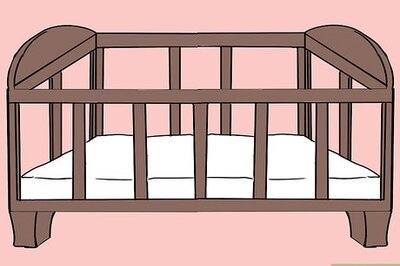
views
Immersion in water can wreak havoc on a car, especially its engine, electrical system, and interior. While Mumbai is notorious for water clogged roads every monsoon season, Delhi-NCR is inching close despite having better quality infrastructure as indicated in many studies.
However, the heavy downpour in the national capital region for the last couple of days has left everyone wondering if civic bodies have the understanding of road construction. Images are surfacing from Delhi, Gurgaon, Ghaziabad as major roads are submerged in water, especially underpasses, which are often at high risk of water clogging.
In the past, we have seen devastating floods that destructed a lot of cars in Chennai and Mumbai. If your car has been immersed in water more than halfway up its wheels, follow these 10 steps compiled by Code6, an aftermarket engine remapping company based in Kochi.
1. Do not attempt to start the car
-It’s tempting to turn the key and see if the car still works, but if there is water in the engine, attempting to start it could damage it beyond repair. If in doubt, it is best to have the car towed to a mechanic.
2. Determine how deep the car was submerged
-Mud and debris usually leave a waterline on the car inside as well as outside. If the water did not rise above the bottom of the doors, your car will probably be fine. Most insurance companies will consider the car totalled (damaged beyond economically-reasonable repair) if water reaches the bottom of the dashboard.
3. Call your insurance company
-Flood damage is generally covered by comprehensive (fire and theft) insurance, so even if you don’t have collision coverage, you may be covered for repairs or replacement. Your insurance company will probably be flooded with claims, so it’s a good idea to start the process early.
4. Start drying the interior
-If water got inside the car, mould will grow quickly. Start by opening the doors and windows and putting towels on the floor to soak up water, but you should plan on replacing anything that got wet, including carpets, floor mats, door panels, seat padding and upholstery. Remember, these repairs are likely to be covered by your comprehensive insurance.
5. Check the oil and the air cleaner
-If you see droplets of water in the dipstick or the level of the oil is high, or if the air filter has water in it, do not attempt to start the engine. Have it towed to a mechanic to have the water cleared and the fluids changed. (Hard-core do-it-yourselfers can try changing the oil, then removing the spark plugs and cranking the engine to blow out the water, but we still recommend leaving this to the mechanic.)
6. Check all the other fluids
-Fuel systems on late model cars are usually sealed, but older cars may need to have their fuel systems drained. Brake, clutch, power steering and coolant reservoirs should be checked for contamination.
Also Watch
7. Check all of the electrical systems
-If the engine looks Ok to start, check everything electrical: headlights, turn signals, air conditioning, stereo, power locks, windows and seats, even the interior lights. If you note anything even slightly amiss, including the way the car runs or the transmission shifts, that could be a sign of electrical trouble. Take the car to a mechanic and remember that the damage may be covered by insurance.
8. Check around the wheels and tyres
-Before attempting to move the car, look for debris lodged around the wheels, brakes and underbody. (Set the parking brake before crawling around the wheels).
9. If in doubt, push to have the car totalled
-A flood-damaged car can experience problems months or even years after the event. If your car is a borderline case, consider pushing your insurance company to declare the car a total loss. Replacing it will cost money, but you may save yourself from some major (and expensive) headaches down the road.
10. Beware of flood-damaged replacements
-Many cars that are totalled due to flooding are simply cleaned up and re-sold. Before buying a used car, have the title checked; words like "salvage" and "flood damage" are giant red flags. Get a comprehensive history on the car, if the car has been moved from another state and re-titled (especially a state that has been subject to flooding just before the title change), the seller may be trying to hide flood damage.
Credit - www.Code6.in




















Comments
0 comment